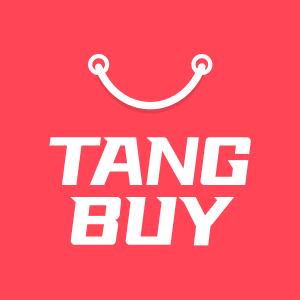Top 8 Free Online Selling Apps to Make Money in 2025

Want to earn more money in 2025? You can use these top 8 free online selling apps: Tangbuy, Facebook Marketplace, eBay, Vinted, Amazon Seller App, Shopify, BigCommerce, and SaleHoo Dropship. Free online selling apps let you have control and flexibility. You do not need to pay anything at the start. More people now shop online. Digital product sales grew by 70% from 2022 to 2024. Here is a quick look:
Metric | Value | Year |
|---|---|---|
Annual digital product value | $2.5 trillion | 2025 |
Global ecommerce adoption | 68% population | 2025 |
Think about what you want to sell. Choose the ecommerce platform that suits you best.
Key Takeaways
Free online selling apps help you sell things for free. You do not need to pay to start. These apps have easy tools to run your shop.
Apps like Tangbuy, Facebook Marketplace, eBay, Vinted, Amazon Seller App, Shopify, BigCommerce, and SaleHoo Dropship are popular. Each app works best for different things you want to sell.
Picking the best app depends on who you want to sell to. It also depends on what you sell, the fees, how easy it is, and the help you get.
Using more than one app lets you find more buyers. You can sell things faster and do not have to depend on just one app.
Good product listings have clear photos and honest details. Fair prices help you get more buyers and make more sales.
You build trust by answering quickly and keeping your word. Getting reviews also helps people trust you more.
Handling payments and shipping well keeps your shop working. It also helps stop problems with buyers.
Online selling is growing fast. New technology and trends make it easier and safer to sell in 2025.

Why Use Free Online Selling Apps
Cost and Flexibility
If you want to sell online, you might not want to spend much money. Free online selling apps help you start without paying at first. You can open your shop with no upfront costs. Many apps have easy tools, like drag-and-drop builders and ready-made templates. These tools help you make your shop fast, even if you are new to selling.
Here are some main reasons to use free online selling apps in 2025:
You do not need to risk your own money when you begin.
You can try different features and see what you like.
Some apps let you list items for free and only pay small fees when you sell.
You get real-time analytics and promotional tools, even on free plans.
You can move to paid plans later if you want more features.
Tip: Free online selling apps are great for side hustles, small businesses, or anyone who wants to try selling without a big risk.
You also get lots of control and flexibility. Many apps let you set your own prices and manage your listings. You can talk to buyers directly. You can choose to sell nearby or to more people. The table below shows how some popular platforms give you control and flexibility:
Platform | Flexibility and Control Features | Benefits Highlighted |
|---|---|---|
Tangbuy | No listing fees, easy management, shipping help | One-stop service, zero-operation fulfillment. Tangbuy is fully responsible for inventory preparation, packaging, logistics, and tracking progress after payment. |
Facebook Marketplace | No platform fees, manage listings, queries, shipping, payments | Sell anytime, anywhere, full control over sales |
Amazon Seller App | Inventory, logistics, payment management, flexible pricing | Track business, control inventory and pricing |
You can run your business your way. You pick what to sell, set your prices, and decide how to talk to buyers.
Trends for 2025
Selling apps are changing quickly. In 2025, more people will use free online selling apps to earn money. The resale market is growing fast. Experts think it could double from $200 billion in 2023 to $400 billion by 2027. Gen Z and Millennials like buying and selling secondhand things. They want to save money and help the planet. Boomers and Gen X are joining too, especially for luxury and special items.
You will see more people selling digital products, refurbished electronics, and collectibles. New technology like AI pricing, blockchain for authenticity, and virtual try-ons will make selling online easier and safer. Many sellers now use more than one app to find more buyers and make more money.
Note: Online communities and tutorials help you learn how to use selling apps. You can find tips, guides, and support from other sellers.
Sustainability is very important. People want to waste less and keep products in use longer. Free online selling apps help you join this trend and make money too.

Best Apps to Make Money

Quick Comparison
You want to find the best apps to make money in 2025. Each app has its own strengths, features, and target users. Some focus on local sales, while others help you reach buyers worldwide. Here’s a quick look at how the top 8 ecommerce apps compare:
App | Key Features & Strengths | User Experience & Audience | Limitations & Cons |
|---|---|---|---|
Tangbuy | Intelligent product selection, exclusive factory supply, one-stop service | Great for dropshipping beginners and | Free storage, ultra-low freight charges, reliable profit |
eBay | Auctions, global reach, trusted brand | Good for new and used goods, wide audience | Fees can add up, less branding control |
Vinted | No listing fees, focus on fashion and lifestyle | Best for clothing and accessories | Limited to certain product types |
Facebook Marketplace | Free listings, local reach, easy to use | Great for beginners and local sellers | No seller protection, limited support |
Amazon Seller App | Huge buyer base, fulfilment options | Good for scaling up, many product types | High competition, seller fees |
Shopify | Customisable shop, easy setup, ecommerce tools | Perfect for building your own brand | Monthly fees after trial, setup needed |
BigCommerce | Scalable, no transaction fees, advanced features | Great for growing ecommerce businesses | Steeper learning curve, higher costs |
SaleHoo Dropship | Dropshipping, supplier directory, easy integration | Good for dropshipping beginners | Limited to dropship products |
You can see that each digital marketplace offers something different. Some give you more control, while others help you reach more buyers. If you want to sell locally, Facebook Marketplace might suit you. If you want to build a brand, Shopify or BigCommerce could be better.
Tip: Try more than one app to reach more buyers and boost your sales.
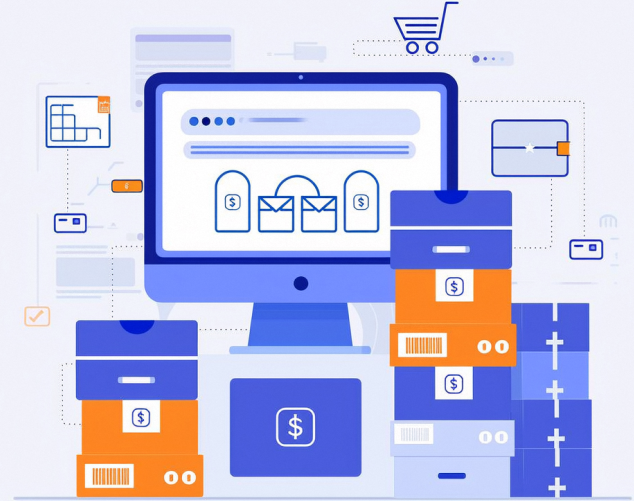
Selection Criteria
Choosing the right ecommerce app can feel tricky. You want to make money, but you also want an app that fits your needs. Here’s what you should look for:
Think about your target audience. Who do you want to sell to? Young people, families, collectors, or local buyers?
Check what your competitors do. Look at their shops, prices, and how they talk to buyers.
Pick an app that matches your business goals. Do you want to sell lots of items, or just a few special things?
Test different apps and see which one feels easiest for you.
Make sure the app has a good user experience. Avoid apps with too many ads or confusing menus.
Look at the fees and commissions. Some apps are free to list, but take a cut when you sell.
Think about support and community. Some apps have great help centres and active seller groups.
Consider your own skills. Some ecommerce platforms need more setup or technical know-how.
You want an app that helps you grow, not one that holds you back. The best apps to make money are popular, trusted, and easy to use. They let you start for free or with very low costs. You can find lots of guides and tips online to help you get started.
Other notable online platforms can help you earn extra cash. Meesho is popular for reselling in India. Kajabi is great for digital products and courses. Craigslist is good for local sales. Swagbucks and Google Opinion Rewards let you earn small amounts by doing surveys or simple tasks. These options can help you add more income streams alongside your main ecommerce shop.
Note: The right digital marketplace depends on what you want to sell and how you want to run your business. Try a few and see what works best for you.

App Reviews

Tangbuy
Features
Intelligent product selection, doubling efficiency: offer high-quality exclusive factory sources. The product selection center supports screening by category, trend, price, and season, quickly matching market demands.
Precise pricing and profit guarantee: One-click pricing, strict quality inspection, return if not satisfied, and reduce quality risks. Flexible packaging saves shipping costs. Intelligent logistics, VIP discounted shipping fees.
Fulfillment Management, zero operation: Free warehousing. Tangbuy is fully responsible for inventory preparation, packaging, and logistics. Progress tracking is conducted after payment, and drop shipping is available. High-quality customer service.
Pros and Cons
Pros:
Tangbuy’s biggest advantage lies in its direct factory pricing products can be up to 70% cheaper than typical retail. There are no intermediaries, giving users transparency and control over sourcing.
The platform supports flexible MOQs, including single item orders, making it ideal for small businesses, product testing, or content-based commerce.
With a team built by former Alibaba executives, Tangbuy brings strong cross-border ecommerce expertise, offering practical solutions for influencers, TikTok sellers, and emerging brands.
Cons:
Despite its strengths, Tangbuy is still a growing platform and may not yet support all local online payment methods. However, customers with credit cards or Apple Pay can complete payments smoothly.
Since the company operates primarily out of China, users in other time zones may experience delays in customer support response during non-overlapping hours. Additionally, some niche product categories may still be in the process of being expanded. For new users, minor communication gaps may occur due to language or cultural differences.
Tip: Most Tangbuy orders are shipped via air freight, which ensures speed, but for certain remote regions or if your package exceeds standard air shipping limits, shipping costs may be higher than expected.
Best For
Tangbuy is great if you are beginner and anyone who wants to try selling apps without learning hard ecommerce tools and also start with little money. It works well for beginners who want to try dropshipping without big risks. If you like learning from guides and want help, then you will enjoy it.
They not only select high-quality products but also offer comprehensive services to solve your problems from the source.
eBay
Features
eBay is one of the oldest and most trusted selling apps. You can sell almost anything, from rare collectibles to everyday items. The app lets you use auctions or set fixed prices. eBay gives you a global audience and tools to track sales, manage stock, and promote your listings.
Here are some of the most common items sold on eBay through the free selling app:
Category | Common Items Sold on eBay (via free selling app) |
|---|---|
Pet Accessories | Collars, leashes, bowls, feeding mats, pet beds, pet clothing accessories (tank tops, bandana collars, tags) |
Home and Garden | Heating and cooling systems, inverters, outdoor power equipment, small kitchen appliances (blenders, coffee makers, air fryers), custom home decor (cushions, blankets, rugs, personalised mugs) |
Cell Phones & Accessories | Cell phones, car phone holders, phone cases (custom designs), phone parts and accessories (batteries, chargers, screen protectors) |
Automotive Parts | Motorcycle and scooter parts, lighting and bulbs (headlights, taillights, interior bulbs), auto electrics (batteries, fuses, relays) |
You will also find trending products like: Nordic pendant chandeliers, wall light sconces, round vanity mirrors, marble coasters, ice moulding trays, dual strap fitness trainers, resistance bands, outdoor camping folding tables, travel LED compact mirrors, and transparent makeup bags.
eBay has different store types with different fees and benefits. Here’s a table showing the main options:
Store Type | Monthly Fee (USD) | Free Listings Included | Reduced Insertion Fees (per listing) |
|---|---|---|---|
Starter Store | $7.95 | 250 free auction or fixed-price listings | $0.30 |
Basic Store | $27.95 | 1,000 zero-insertion fixed-price, 250 auction | $0.25 |
Premium Store | $74.95 | 10,000 free fixed-price, 500 auction listings | $0.10 (fixed-price), $0.15 (auction) |
Anchor Store | $349.95 | 25,000 free fixed-price, 1,000 auction listings | $0.05 (fixed-price), $0.10 (auction) |
Enterprise Store | $2,999.95/year | 100,000 free fixed-price, 2,500 auction listings | $0.05 (fixed-price), $0.10 (auction) |
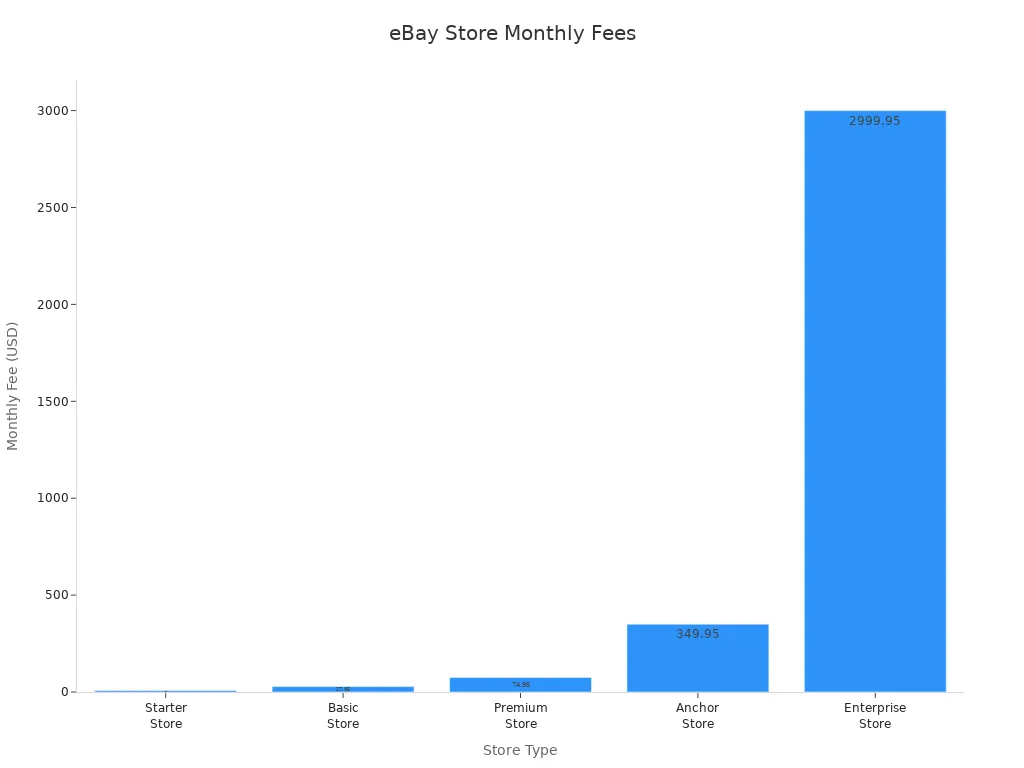
How It Works
To list an item, take some photos and write a description. Choose if you want an auction or a fixed price. Set your shipping options and publish your listing. Buyers can bid or buy right away. When your item sells, you send it and get paid through eBay’s secure system. The app helps you track sales and manage orders.
Pros and Cons
Pros:
Huge global audience
Trusted brand with strong buyer protection
Flexible selling options (auction or fixed price)
Tools for managing your ecommerce business
Cons:
Fees can add up, especially if you sell a lot
Lots of competition in popular categories
Not many ways to show off your brand compared to other ecommerce platforms
Note: eBay is good for casual sellers and people who want to build a bigger ecommerce business.
Best For
eBay is perfect if you want to reach buyers all over the world, sell special or secondhand items, or start a small ecommerce shop. It is good if you want to try selling apps with lots of features and support.
Vinted
Features
Vinted is for secondhand fashion, accessories, and lifestyle items. You can list clothes, shoes, bags, and some new beauty products. The app is free for sellers—buyers pay the fees. Vinted gives you tools like “Bump” to help your listings get seen, bundle discounts to sell more, and easy sharing to social media. The platform sorts out shipping labels, so posting items is simple.
Vinted has grown fast, with over 65 million users by 2023. The company said revenue went up by 36% in 2024, showing more people are joining.
How It Works
You make a profile on Vinted and add your bank details. Start listing your items by taking clear photos and writing honest descriptions. Set your prices. When someone buys your item, Vinted gives you a shipping label. You pack and send the item. When the buyer gets it and says it is okay, you get paid straight to your bank. You can also share your listings on social media to find more buyers.
Vinted helps you by: making it easy to set up your profile and check your account, sorting out shipping labels and giving you delivery choices, letting you take out your money with no extra fees, giving you tools to promote your listings and offer bundles, and making rules to keep the marketplace safe and fair.
Pros and Cons
Pros:
No seller fees—buyers pay instead
Simple to use, even for beginners
Shipping is managed for you
Community-driven with strong buyer protection
Cons:
Only for secondhand and some new items (mainly fashion)
No commercial selling or dropshipping allowed
Only works in certain countries
Tip: Use the “Bump” feature and bundle discounts to help your sales and sell items faster.
Best For
Vinted is great if you want to sell secondhand clothes, shoes, or accessories. It is good if you want a free, easy app with a friendly community. You will like Vinted if you want to tidy your wardrobe or start a small side job in the secondhand ecommerce market.
Facebook Marketplace
Features
Facebook Marketplace is a simple way to sell things near you or across your country. You can list your items for free and lots of people will see them. The platform lets you talk to buyers using Facebook Messenger. This helps you chat and make plans quickly. You can sell secondhand goods, electronics, furniture, clothes, and even cars. Businesses can use Marketplace to find more customers.
Here’s a quick look at how many people use Facebook Marketplace in 2025:
Metric | Value |
|---|---|
Monthly active buyers | Up to 1.228 billion |
Monthly active sellers | 250 million worldwide |
Percentage of Facebook users shopping on Marketplace | Up to 40% of 3.07 billion monthly active users |
Users logging in solely to shop | 491 million (16% of active users) |
Monthly active users globally | Over 1 billion |
Monthly active users in the US | More than 300 million |
Businesses actively using Marketplace (2022) | Over 100 million |
Businesses advertising on Marketplace | More than 1 million |
How It Works
To start selling, open Facebook and tap the Marketplace icon. Make a new listing by adding photos and a short description. Set your price and choose your location. Buyers will message you directly. You can agree on payment and delivery with them. If you want, you can offer shipping to reach more people. Facebook does not charge you to list most items, so you keep more money.
Pros and Cons
Pros:
Free to list items
Huge audience and local reach
Easy to use with your Facebook account
Direct chat with buyers
Cons:
Not much seller protection
Scams can happen, so stay careful
Less help for problems than other ecommerce platforms
Tip: Always meet buyers in safe public places and check their profiles before you agree to sell.
Best For
Facebook Marketplace is great if you want to sell things near you, tidy up your home, or start a side job with no costs. It is good for beginners and anyone who wants to try selling apps without learning hard ecommerce tools.
Amazon Seller App
Features
The Amazon Seller App lets you manage your whole Amazon business from your phone. You can update listings, check orders, and talk to customers wherever you are. The app sends you real-time alerts for sales and messages, so you never miss a chance to make money. You can scan products with your phone camera to check prices and see if they are worth selling. The app helps you change prices quickly to stay ahead of the competition.
Here are some key features you will find useful:
Manage orders, inventory, and pricing in real time
Create and edit product listings on the go
Get sales analytics to help you make smart decisions
Scan barcodes to find new products to sell
Respond to customer questions instantly
Adjust prices quickly to stay competitive
Track shipments and fulfil orders easily
Free to download and use on mobile devices
The app works for all types of sellers, from small-town artisans to big retailers. You can see how different sellers benefit in the table below:
Seller Type | Key Advantage | Impact Metrics |
|---|---|---|
Small-town artisan | Streamlined inventory and order fulfilment | 70% sales increase in 3 months |
Apparel retailer | Faster fulfilment and better listings | 25% quicker fulfilment, happier customers |
Home-based beauty seller | Efficient order processing and business growth | Data-driven marketing, more sales |
How It Works
You download the app and sign in with your Amazon seller account. You can list new products by taking photos and writing descriptions. The app lets you set prices, manage stock, and track orders. When you make a sale, you get a notification. You can print shipping labels and update order status right from your phone. The app also helps you answer customer questions quickly, which can boost your ratings.
You can check your sales and see which products are doing well. The app gives you tips to improve your listings and helps you spot trends. You can even scan items in shops to see if they are worth selling on Amazon.
Pros and Cons
Pros:
Manage your business anywhere, anytime
Real-time alerts for sales and messages
Easy product scanning and listing
Free to use and highly rated by users
Cons:
High competition from other sellers
Amazon charges fees on each sale
You need to keep up with Amazon’s rules and policies
Tip: Use the app’s analytics to spot bestsellers and adjust your prices for more sales.
Here’s a look at what Amazon sellers usually earn each month:
Monthly Sales Range | Percentage of Sellers |
|---|---|
Under $500 | 31% |
$501 - $1,000 | 17% |
$1,001 - $5,000 | 22% |
$5,001 - $10,000 | 11% |
$10,001 - $25,000 | 7% |
$25,001 - $50,000 | 5% |
$50,001 - $100,000 | 4% |
$100,001 - $250,000 | 1% |
$251,000 - $500,000 | 1% |
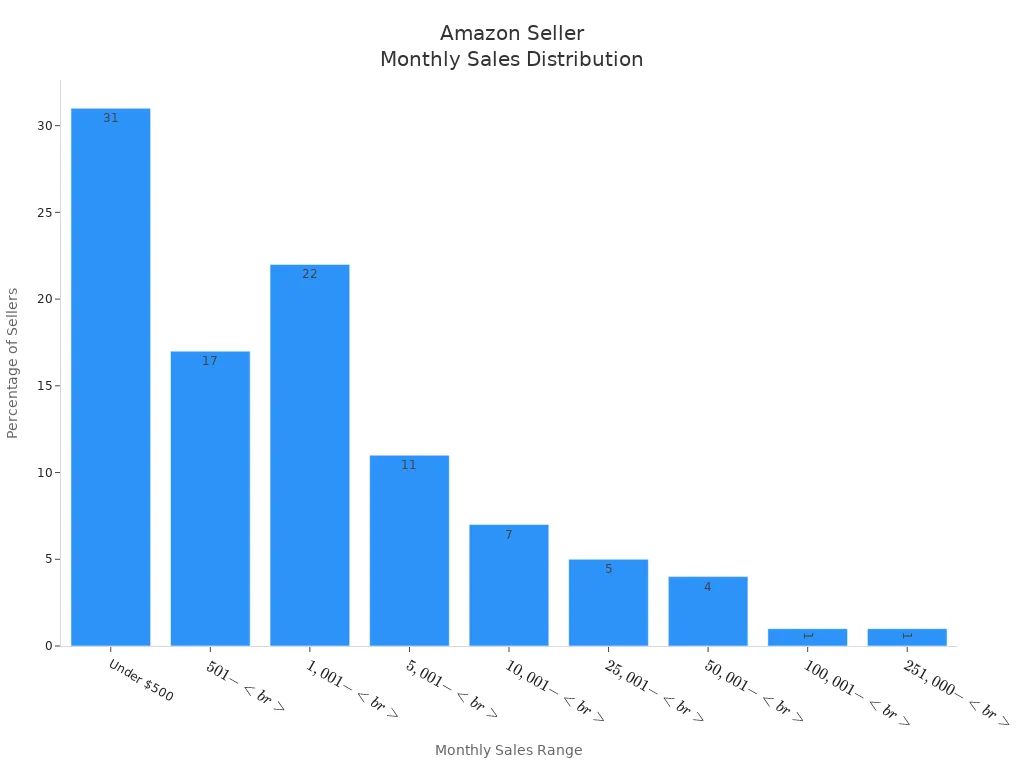
Most new sellers make about $2,500 per month in sales, but your profit will be a part of that after fees.
Best For
The Amazon Seller App is perfect if you want to run your business on the go. It suits you if you want to scale up, reach a huge audience, and use data to make decisions. If you like using selling apps that offer lots of tools and support, this app is a strong choice.
Shopify
Features
Shopify helps you build your own online shop with ease. You can customise your store, add products, and start selling in minutes. The platform gives you access to lots of themes, apps, and marketing tools. You can sell physical goods, digital products, or even services. Shopify supports payments, inventory tracking, and customer management all in one place.
Shopify offers a 14-day free trial, so you can try most features before you pay. Here’s a quick look at the main plans:
Plan Name | Trial/Free Plan Details | Monthly Cost | Key Features Included | Limitations Compared to Other Apps |
|---|---|---|---|---|
Free Trial | 14-day free trial for most subscription plans | Free for 14 days | Access to most features to evaluate the platform | Short trial period compared to some competitors |
Starter Plan | No permanent free plan; low-cost entry plan | $5/month | Social selling without website, product pages, secure checkout, order management, analytics | Limited to social selling, no full website or custom domain checkout |
Lite Plan | No free plan; low-cost plan for existing sites | $9/month | Add buy buttons to existing sites, sell on social media, POS app, invoicing, access to Shopify apps | No full website creation, no custom domain for checkout |
Basic Plan | No free plan; full online store capabilities | $39/month | Full online store, hosting, customisable themes, inventory tracking, abandoned cart recovery, customer segmentation, access to apps | Requires paid apps for advanced marketing/navigation features |
You get a lot of features, but the free trial is short. Some other selling apps offer longer free plans.
How It Works
You sign up for a free trial and pick a theme for your shop. You add your products, set prices, and write descriptions. Shopify lets you connect your own domain name. You can use built-in tools to manage stock, process orders, and track sales. The app store gives you extra features, like email marketing or loyalty programmes.
You can sell on your website, social media, or even in person with Shopify POS. The dashboard shows you how your shop is doing, so you can make changes fast.
Pros and Cons
Pros:
Easy to set up and customise
Lots of themes and apps to choose from
Supports digital and physical products
Good for building your own brand
Cons:
Only a 14-day free trial, no permanent free plan
Monthly fees after the trial ends
Some advanced features cost extra
New sellers often face a few challenges on Shopify:
Stiff competition from other shops
Hard to get noticed without good marketing
High cart abandonment rates
Technical issues like slow loading
Managing stock and shipping as you grow
Keeping customers coming back
Note: Use Shopify’s app store for tools that help with marketing, inventory, and customer service.
Best For
Shopify is great if you want to build your own brand and have control over your shop. It suits you if you want to sell both digital and physical products. If you are ready to invest time in marketing and want a professional-looking store, Shopify stands out among selling apps.
BigCommerce
Features
BigCommerce gives you lots of tools to help your online shop grow. You can add as many products as you want. There are no limits on storage or how many people visit your shop. You do not pay any transaction fees, so you keep more money. You get strong SEO tools, special pricing options, and good ways to manage your stock. BigCommerce lets you sell to both normal shoppers and businesses from one place.
You can link your shop to Amazon, eBay, Facebook, and Instagram. This helps you find more buyers without much extra work. You can run more than one shop from the same dashboard. There are over 1,200 apps you can use for things like email marketing, live chat, or loyalty rewards. BigCommerce is cloud-based, so your shop is always fast and safe.
Tip: If you want your business to grow and need more than just basic tools, BigCommerce gives you the power and freedom to do more.
How It Works
First, sign up for a free trial. Pick a theme that fits your shop. Add your products, set prices, and write short descriptions. The dashboard helps you see orders, check your stock, and track your shop’s progress. You can set different prices for normal buyers and wholesale buyers. If you want to sell on other sites, you can connect your shop to Amazon, eBay, or social media with a few clicks.
BigCommerce lets you change your shop with apps and add-ons. You can use built-in tools to run sales, send emails, and get better search results. You can manage more than one shop from one place. This is helpful if you want to sell in other countries or to different types of customers.
Pros and Cons
Pros:
No limits on products, storage, or visitors
No transaction fees
Advanced tools for SEO, marketing, and stock
Sell on many channels and to businesses
Over 1,200 apps to add features
Cons:
Costs more to start than some other platforms
Harder for beginners to learn
Only a free trial, not a forever free plan
Feature | BigCommerce Advantage | What It Means for You |
|---|---|---|
Unlimited everything | No limits on products or sales | Grow your shop without extra costs |
Multi-channel selling | Sell on Amazon, eBay, Facebook, Instagram | Reach more buyers easily |
B2B and B2C support | Custom pricing and wholesale options | Sell to both businesses and shoppers |
Headless commerce | Manage many shops from one dashboard | Expand to new markets smoothly |
Note: BigCommerce is best if you want your business to grow and need more advanced tools. If you want something easy, it might feel too much at first.
Best For
BigCommerce is good if you want a big online shop or want to grow fast. It is great for new companies, big brands, and anyone who needs strong tools. If you want to sell on many sites, manage lots of stock, or offer special prices, BigCommerce is a top choice. You will like it if you want to change your shop your way and need help to grow.
SaleHoo Dropship
Features
SaleHoo Dropship helps you open an online shop without buying stock first. You get access to over 8,000 trusted suppliers. Many let you order just one item at a time, which is good for new sellers. SaleHoo gives you tools to find popular products. You can use guides, videos, and join a friendly forum.
The platform links you to suppliers who store and ship your products. You list items in your shop, and when someone buys, the supplier sends it straight to your customer. SaleHoo has a 60-day money-back promise, so you can try it with less worry. The site is easy to use, and support is quick to answer.
How It Works
You sign up and pay a small fee to join. Pick products from the SaleHoo list and add them to your shop. You do not need to buy stock before you sell. When you get a sale, you order from the supplier. The supplier ships the product to your customer. You keep the profit from each sale.
SaleHoo’s tools help you find products that sell well and avoid items with too much competition. You can follow guides and videos to learn how to set up your shop, write good listings, and market your products. The forum is a good place to ask questions and get tips from other sellers.
Pros and Cons
Pros:
Low cost to join, pay once a year or for life
Access to thousands of trusted suppliers
No need to buy stock first
Tools for research and learning
Helpful community and fast support
Cons:
You must pay to join (not totally free)
Only for dropshipping products
Some suppliers may take longer to ship
What You Get | Why It Helps You |
|---|---|
8,000+ suppliers | More choice and less risk |
Market research tools | Find products that actually sell |
Step-by-step guides | Learn quickly, even if you are a beginner |
60-day guarantee | Try it out with less worry |
Tip: Use SaleHoo’s research tools before you add products. This helps you skip slow sellers and focus on what buyers want.
Best For
SaleHoo Dropship is best if you want to start selling online with little money. It works well for beginners who want to try dropshipping without big risks. If you like learning from guides and want help from a friendly group, SaleHoo makes things easier. You will enjoy it if you want to test different products and see what works before you spend more.

Choosing Online Selling Apps
Product Fit
You want to pick an app that matches what you sell. Not every platform works for every product. Some apps have lots of buyers looking for clothes, while others are better for gadgets or home goods. Think about where your ideal customer shops. For example, Amazon sees 30% more sales in home and outdoor products than eBay. If you sell garden tools or patio furniture, Amazon might help you reach more buyers. On the other hand, Vinted is perfect for secondhand fashion.
Here are some things to check before you choose:
Look at how many people visit the marketplace.
Think about what those visitors want to buy.
Check if the app is popular in your area.
See if the platform supports your product type.
Tip: If you sell niche items, try a marketplace with buyers who want those products. You will waste less time and get better results.
Fees and Support
Every app has its own fee structure. Some charge you to list items, while others only take a cut when you make a sale. You might also pay for shipping, marketing, or extra features. For example, Etsy does not charge listing fees, which helps if you have a big catalogue. Always read the fee details before you start.
Support matters too. Good online selling apps give you tools like delivery scheduling, marketing help, and even APIs for bulk uploads. Some platforms offer branded stores or special content to help you stand out. If you want to grow, look for apps with strong seller support and easy ways to get help.
Ease of Use
You want an app that feels simple and quick. If you spend too much time learning the system, you might give up before you start selling online. Look for clear menus, easy listing tools, and helpful guides. Some apps let you upload lots of products at once. Others have drag-and-drop builders or step-by-step wizards.
Ask yourself:
Can you set up your shop in under an hour?
Does the app have a mobile version?
Are there guides or videos to help you?
Note: The best app is the one you enjoy using. If you feel comfortable, you will list more items and make more sales.
Maximise Earnings

Listing Tips
You want your products to stand out in a busy ecommerce world. Good listings help you attract more buyers and boost your sales. Start by understanding what makes each platform special. For example, Facebook Marketplace lets you add up to 10 photos and even a video. eBay gives you 250 free listings each month and supports up to 24 photos. OfferUp and Craigslist also let you post many images, which helps buyers see what they are getting.
Here are some top tips for creating listings that work:
Use clear, bright photos from different angles. Show any details or flaws.
Write honest, benefit-focused descriptions. Tell buyers how your product helps them.
Add keywords to your product titles. Include brand, size, colour, and condition.
Keep your prices consistent across all ecommerce platforms. This builds trust.
Update your listings often to keep them fresh and visible.
Tip: Always check what similar items look like on each app. This helps you set the right price and style for your listing.
Building Trust
Trust is key when you want to succeed in ecommerce. Buyers look for sellers who seem honest and reliable. You can build trust in a few simple ways.
Use your real name and a friendly profile photo.
Respond quickly to messages and questions.
Keep your promises about delivery times and product quality.
Collect reviews and ratings from happy buyers.
Stay polite, even if you get tough questions.
Payments and Shipping
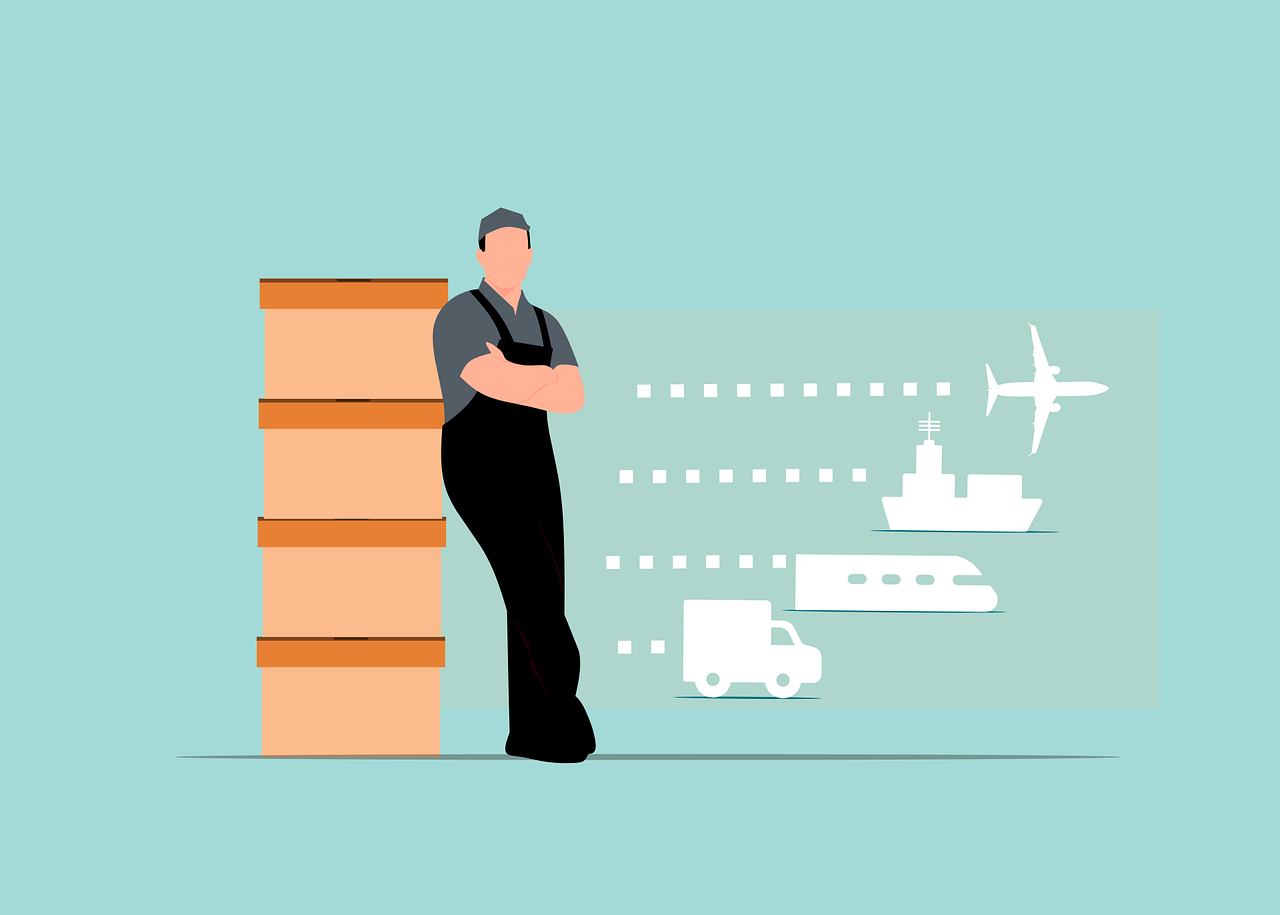
Managing payments and shipping well keeps your ecommerce business running smoothly. You want to avoid mistakes and keep buyers happy.
Use a central system to track orders from all your selling apps. This stops you from selling the same item twice.
Be clear about shipping fees. Tell buyers who pays for delivery.
Set honest shipping times. If you need more time, update your listings.
Offer local pickup if possible. This saves on postage and helps you meet buyers safely.
Adjust your prices to cover shipping costs, so you do not lose money.
Here is a quick checklist for payments and shipping:
Track all orders in one place.
Keep your stock levels up to date.
Tell buyers when you post their items.
Use tracked shipping for expensive goods.
Stay organised to avoid late deliveries.
Tip: Many ecommerce apps have guides and communities. You can learn new tricks and find coupon codes to save money on shipping.
Multi-Platform Selling
Have you ever wondered why some sellers seem to make more money online? One big reason is that they do not stick to just one app. They use multi-platform selling. This means you list your products on more than one ecommerce platform at the same time. You reach more buyers and boost your chances of making a sale.
Let’s say you have a great pair of trainers. If you only list them on Vinted, you wait for someone on that app to find them. If you also put them on eBay and Facebook Marketplace, you triple your chances. More eyes on your products means more sales.
Here are some simple steps to help you get started with multi-platform selling:
Pick two or three ecommerce apps that fit your products.
Create clear, honest listings for each platform.
Use different photos or descriptions if the apps have different styles.
Keep track of your stock. If you sell an item on one app, remove it from the others.
Check your messages often so you do not miss a buyer.
Tip: Use a notebook or a simple spreadsheet to track where you have listed each item. This helps you stay organised and avoid double-selling.
Multi-platform selling works well for all kinds of sellers. You might be clearing out your wardrobe, running a small business, or testing new products. You can even try different types of ecommerce, like selling digital downloads on Shopify.
Here’s a quick table to show how multi-platform selling can help you:
Benefit | What It Means for You |
|---|---|
More buyers | More people see your products |
Faster sales | Items sell quicker |
Less risk | Not stuck with one app’s rules |
Learn what works | See which ecommerce app is best |
You do not need fancy tools to start. Many sellers use free apps and basic spreadsheets. Some ecommerce platforms even let you import listings from other sites, which saves time.
If you want to grow your income, try combining ecommerce selling with other ways to make money. You could add freelancing, affiliate marketing, or digital products. Online communities and tutorials can help you learn new tricks. You might even find coupon codes for listing upgrades.
Note: The more places you show your products, the more likely you are to make a sale. Give multi-platform selling a try and watch your earnings grow.
You have many free online selling apps to choose from in 2025. Each one gives you a chance to earn money with little risk. Pick the app that matches your products and goals. Try more than one platform to reach more buyers and boost your income.
Test different apps to see what works best for you.
Combine selling with other money-making ideas for steady results.
The world of online selling keeps growing. Start today and see how far you can go!

FAQ
Can I sell digital products on these apps?
You can sell digital products on Shopify and BigCommerce. These platforms support downloads and digital files. Most local selling apps, like Vinted, focus on physical goods.
Do I need a business licence to sell online?
You usually do not need a business licence to sell a few items as a hobby. If you plan to sell regularly or make a business, you should check your local rules.
How do I avoid scams when selling?
Stay safe by meeting buyers in public places. Use tracked shipping for expensive items. Never share personal details. If something feels wrong, trust your instincts and stop the deal.
Can I use more than one selling app at the same time?
Yes, you can! Many sellers use two or three apps to reach more buyers. Just remember to update your listings if you sell an item on one platform.
How do I get paid from these apps?
Most apps pay you through bank transfer or PayPal. Some, like Facebook Marketplace, let you arrange cash on collection. Always check the payment options before you list your items.
What should I do if a buyer does not pay?
If a buyer does not pay, you can relist your item or report the problem to the app’s support team. Stay polite and keep records of your messages.

TangBuy: A Smarter Way to Dropship in 2025
If you're looking to stay competitive with dropshipping in 2025, speed and trend-awareness are key. TangBuy helps you stay ahead with real-time product trends, fast fulfilment, and factory-direct sourcing. With over 1 million ready-to-ship items, 24-hour order processing, and seamless Shopify integration, TangBuy makes it easier to test, scale, and succeed in today's fast-moving eCommerce landscape.
See Also
Essential Dropshipping Applications Every Shopify Store Needs Today
Best Free Online Platforms To Sell Your Products Easily
Profitable Dropshipping Concepts To Earn Income In 2025
